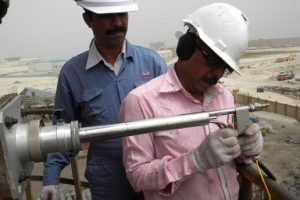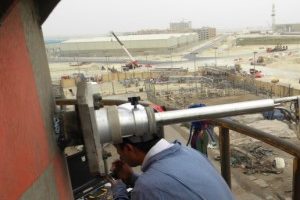Predictive Emission Monitoring System (PEMS) Audit
Predictive emission monitoring systems are not currently required in any US Federal rule. However, they may be used under the NSPS to predict nitrogen oxides emissions from small industrial, commercial, and institutional steam generating units. In some cases, PEMS has been approved as an alternative to CEMS for the initial 30-day compliance test at these facilities. PEMS comply with the 40 CFR 60 & 63 Performance Specification 16.
Stack Emission Compliance Test
Stack testing utilizing US EPA 40 CFR 60 Reference Method such as:
- Analytical sampling procedure for NOX, SO2, CO, CO2, O2, and Total Hydrocarbon (THC).
- Particulate Matter Sampling – RM 5
- Dioxin and Furans test – RM 23
- Ammonia Sampling – CTM 027
- Halides – RM26test
What is Stack Emission?
A flue-gas stack is a type of chimney, a vertical pipe, channel or similar structure through which combustion product gases called flue gases are exhausted to the outside air. Flue gases are produced when coal, oil, natural gas, wood or any other fuel is combusted in an industrial furnace, a power plant’s steam-generating boiler, or other large combustion devices. Flue gas is usually composed of carbon dioxide (CO2) and water vapor as well as nitrogen and excess oxygen remaining from the intake combustion air. It also contains a small percentage of pollutants such as particulate matter, carbon monoxide, nitrogen oxides, and sulfur oxides. The flue gas stacks are often quite tall, so as to disperse the exhaust pollutants over a greater area and thereby reduce the concentration of the pollutants to the levels required by governmental environmental policy and environmental regulation.
Effect of Flue Gas:
Air pollution caused by particulate matter and other pollutants not only acts directly on the environment but by contamination of water and soil lead to their degradation. Wet and dry deposition of inorganic pollutants leads to acidification of environment. These phenomena affect the health of the people, increase corrosion, and destroy cultivated soil and forests. Most of the plants, especially coniferous tree are not resistant oxides. Following longer Exposure leaves wither and fall. Many cultivated plants are not resistant to these pollutants, especially in the early period of vegetation. Photochemistry plays an important role in these transformations. SO2 and NOx are oxidized and Sulphuric and nitric acids are formed in the presence of water vapors, fog, and droplets.
Other problems connected with human activities are the emission of volatile organic compounds to the atmosphere. These emissions cause stratospheric ozone depletion, ground level photochemical ozone formation, toxic or carcinogenic human health effects, and growth of the global greenhouse effect, accumulation and persistence in the environment.
With a team of environmental and technical professionals at NewTech, we provide expertise in source emissions testing and engineering services. Our goal is to provide answers and solutions to the growing environmental concerns and issues that the industry now faces. Testing teams are fully qualified and experienced in all aspects of source emission testing and monitoring, and conducts all its testing in strict accordance with the US EPA Reference Method title 40CFR60 Appendix A and 40CFR75.
Our field experience covers a broad range of industries and source categories including;
- Hazardous Waste Incinerators
- Vapor Recovery Units
- Natural Gas Processors
- Bio-Hazardous Waste Incinerators
- Municipal Waste Combustion System
- Refineries
- Cement Plants
- Asphalt Plants
- Chemical Processor



